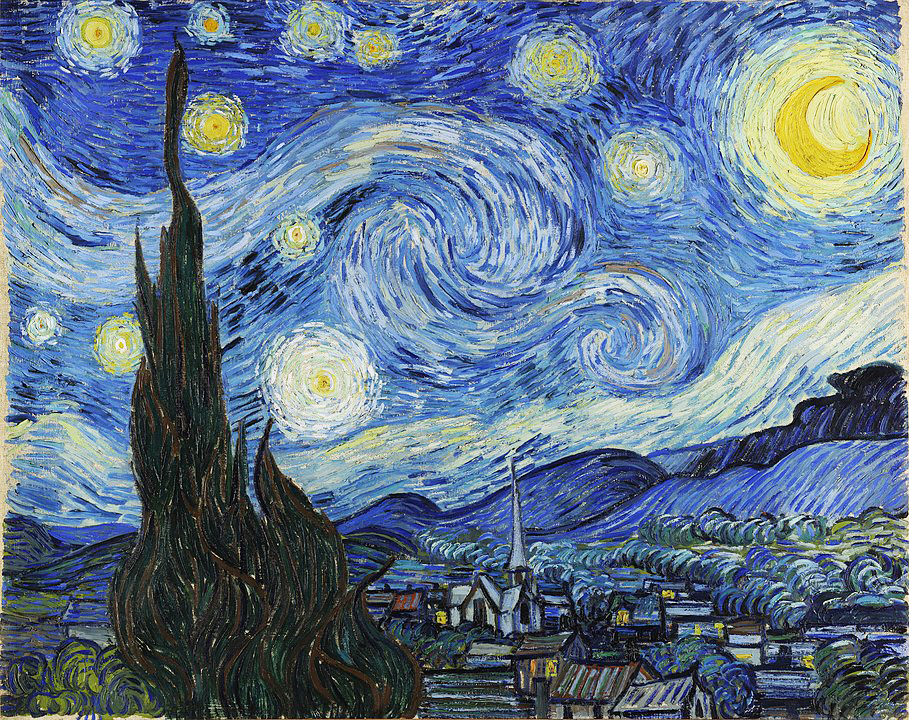
click here to see a full size version of the painting
Name: The Starry Night
Artist: Vincent van Gogh (1853 – 1890)
Date Painted: 1889
Period: Post-Impressionism
Dimensions: 73.7 cm (h) x 92.1 cm (w)
Medium / Material: Oil on Canvas
Location: Museum of Modern Art, New York
Introduction to The Starry Night
The Starry Night is arguably the most recognizable painting in the world. The Mona Lisa or Venus may have something to say about that but I’m sure they would probably agree top three. Art lovers and non art lovers all around the world, would instantly recognize this masterpiece as the work of Vincent van Gogh. Equally, many people know all about van Gogh and the tragic end of his life. Perhaps not so well known is the circumstances which led to the painting of The Starry Night. Continue reading this article to find out more about the painting as well as Vincent van Gogh. When I first started researching this painting I was surprised at how little I really knew about the artist. At the end of this article you will have a greater understanding of the artists and you may even appreciate the piece more as you begin to see in to the mind of the artistic genius that was Vincent van Gogh
Vincent van Gogh (1853 – 1890)
In order to appreciate The Starry Night, we have to understand more about the artist. Everyone knows how Vincent van Gogh cut off his own ear and committed suicide but we need to go a little deeper. This is not a biographical piece on van Gogh but shines light on just enough information to understand the painting better.
In May,1889 Vincent van Gogh, self admitted himself to the Saint-Paul asylum in Saint-Rémy-de-Provence. He would stay at this facility for a full year. It is often said that van Gogh is by far the hardest working painter to have lived and the evidence is there to prove it. Vincent van Gogh did not begin painting until he was 30 and tragically, he would not see his 38. The 2,100 plus creations of artwork, including almost 900 oil paintings were created in a 7 year window.
During his year at the asylum, van Gogh painted approximately 150 paintings. That means he created a painting pretty much every other day and there were periods where he could not paint due to ill health. The asylum which van Gogh stayed at was a more progressive establishment set in countryside with stunning views. His time there was funded by his brother (Theo) who he kept in regular correspondence with. It is said that Vincent almost did not go to this asylum and instead to an establishment in Marseilles. If this had of happened, there is no doubt that the world would not have been treated with this stunning piece of art. Over time van Gogh was permitted to walk the grounds of the asylum and in amongst the hills, the wheatfields, and the low mountain foothills he would get his inspiration to paint The Starry Night in June 1889.
Inspiration for The Starry Night
Vincent van Gogh painted The Starry Night in the day time. He did so from memory but had been working on the concept in the days prior. Using references from the scenery around the asylum, these earlier works were created by van Gogh and you can clearly see how these artworks would combine to form the final painting
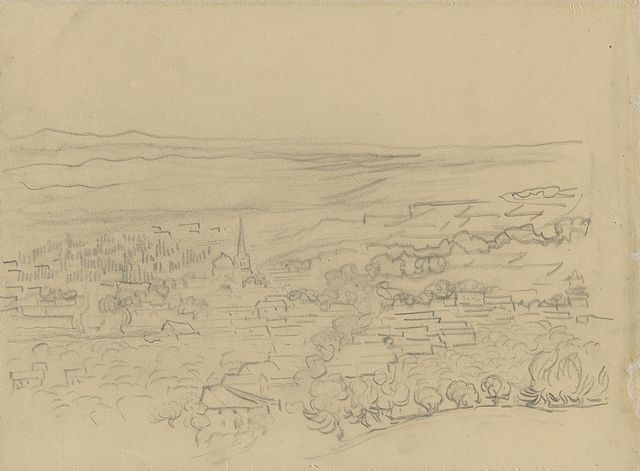
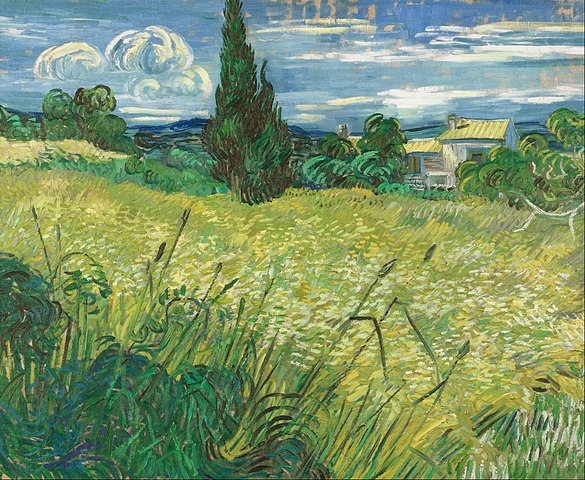
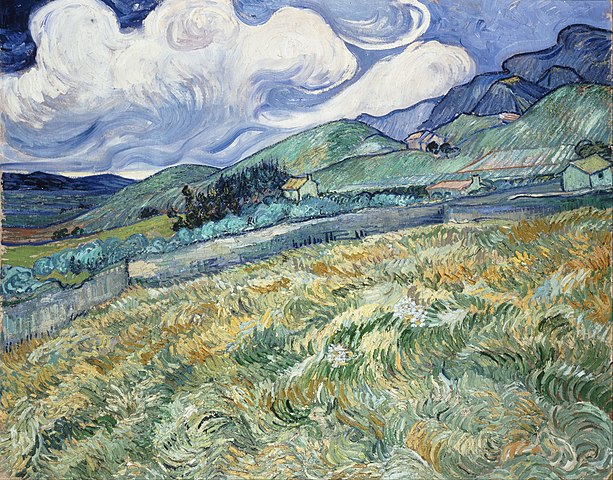
There is a misunderstanding that Vincent van Gogh was not a well regarded painter of his generation. In fact he was a well read, intelligent student of art. van Gogh was well known in his circle of artists which included Paul Gaugin and had his artwork showcased alongside the likes of Cezanne, Renoir and Toulouse-Lautrec. He had also spent time in Paris where he studied the works of Monet, Pissaro and emersed himself deeply in the color theory of Rubens and Delacroix. van Gogh was also a huge fan of Japanese artistic influence. The Great Wave by Hokusai in 1831 was a great influence to van Gogh in The Starry Night
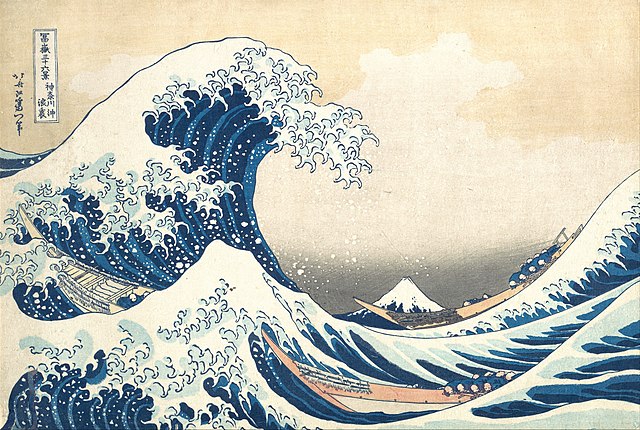
van Gogh had many troubles in life and it is written that religion was something he struggled deeply with. The son of a minister he was brough up Christian but art had become his new religion over time and color was the way he communicated. In a letter to his brother Theo, van Gogh wrote:
“When I have a terrible need of – shall I say the word – religion, then I go out and paint the stars“
Vincent van Gogh – Letter to Theo
From this it is understandable that in painting The Starry Night, van Gogh was attempting to reach out to god. There is something so tragic about a troubled soul who is capable of such artistic genius continued down the path which led to his death. When I look at Starry Night I feel like I am getting a glimpse of how Vincent van Gogh interpreted the world – A view with such a dynamic force, an electricity which makes one feel truly alive.
Thanks to the wonders of science and astronomy, we are able to see what the night sky would have looked like around the time that van Gogh painted The Starry Night. It is fair to say that some artistic license has been take by the artist. For example, the moon would not have been a crescent moon but instead more full. The painting was after all done from memory in the daylight but you can also see the things which would have been present. Venus (the brightest star in the sky), the constellation of Cassiopeia in the upper right corner and maybe some of Pegasus to the left of the moon.
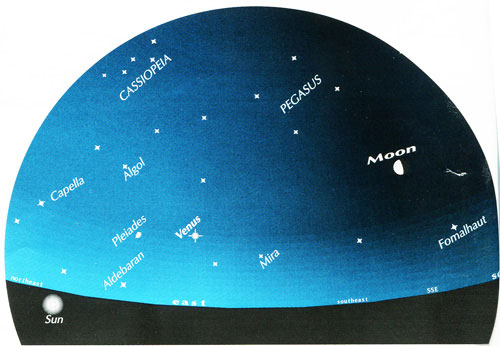
Perhaps the clearest indication of what van Gogh knew he wanted to capture was a letter which was sent to his sister in September 1888:
I definitely want to paint a starry sky now. It often seems to me that the night is even more richly coloured than the day, coloured in the most intense violets, blues and greens.
If you look carefully you’ll see that some stars are lemony, others have a pink, green, forget-me-not blue glow. And without labouring the point, it’s clear that to paint a starry sky it’s not nearly enough to put white spots on blue-black
van Gogh – Letter to Willemien, 1888
Composition of The Starry Night

As you look The Starry Night it almost feels like an instant sensory overload. There is so much going on and the signature short brush strokes take your eyes to all areas of the painting. As you begin to settle on the subjects, it starts become a little simpler. Dominating the foreground of the painting is the large cypress tree that is painted in shades of dark green. The cypress tree is synonymous with death as it is often found in graveyards but this painting feels so alive. We cannot see the bottom of the tree suggesting that it is very close to us. The cypress tree stretches almost the entire vertical plane of the painting connecting the ground to the sky – due to the relationship to death there is a sense that the tree is connecting the earth to a more heavenly plane. When I first looked at The starry Night, for a split second I thought I might have been looking at an abstract of the ocean with the rolling waves and the cypress tree being some kind of underwater plant or piece of seaweed.
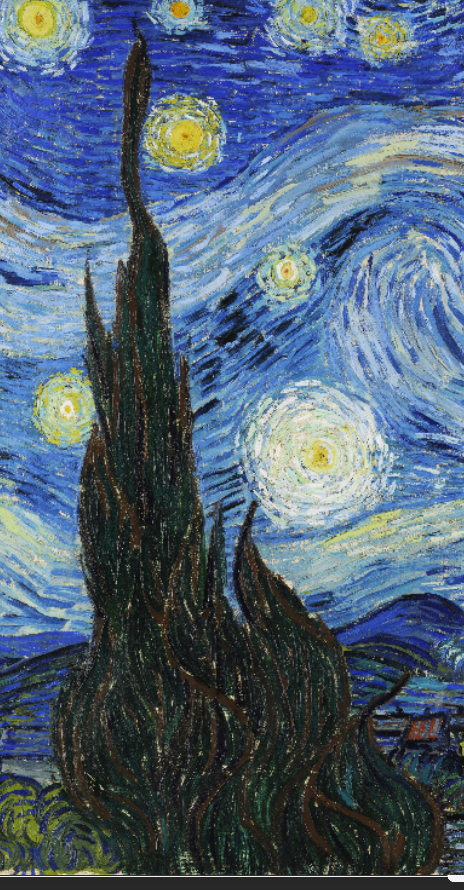
As we then start to look at the background and especially the sky, it is clear to see that there is electricity in the air and a wonderful feeling of dynamism. If you can see the stars then it is likely that there are no clouds so what exactly is this colorful tidal wave that van Gogh has captured. Maybe there were a few clouds but maybe the artist felt something electric in the air or perhaps it was a moment of spiritual sensation that forced van Gogh to capture this scene. I am sure we have all at some point gazed up at the stars and had a sense that something else might be out there and that the night sky is charged with something that we cannot see. When you tie this in with the fact that van Gogh was in an asylum and his mental health not 100%, you start to wonder if you are seeing the world through his eyes and that is exciting.
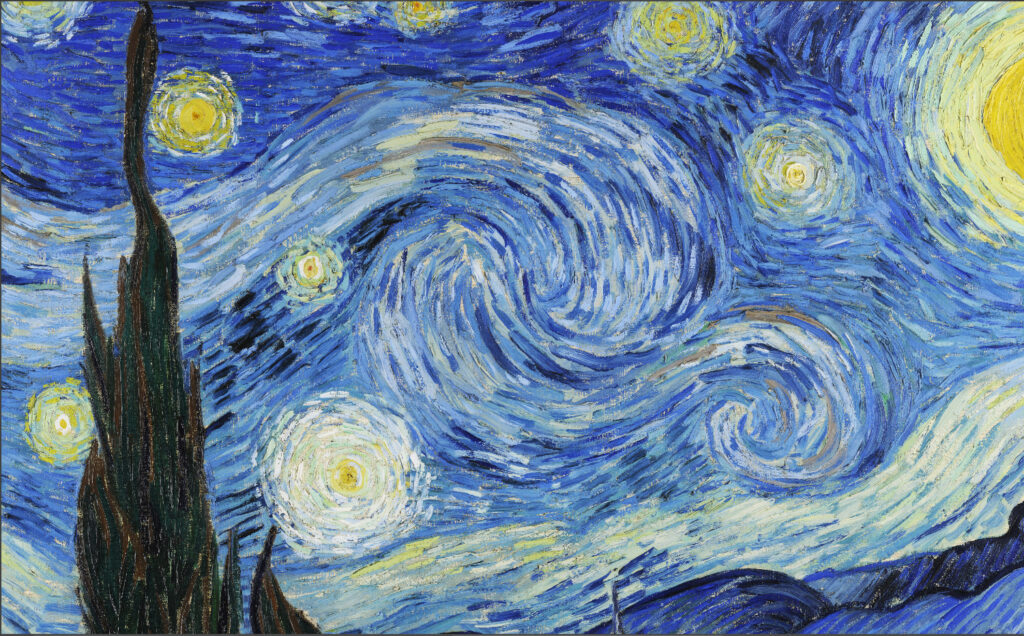
The swirls in the sky carry van Gogh’s signature style of short brush strokes and thickly applied paint. If you look a little closer at the moon on the right hand side you can again see this technique applied. In order to portray the brightly radiating moonlight there is masterful display of color theory and the short brush strokes again give a dynamic feeling as the circling effect moves outwards. in 1845, English astronomer, William Parsons, Lord Rosse, sketched out a whirlpool style galaxy. It is widely believed that van Gogh attempted to recreate this in his swirling sky
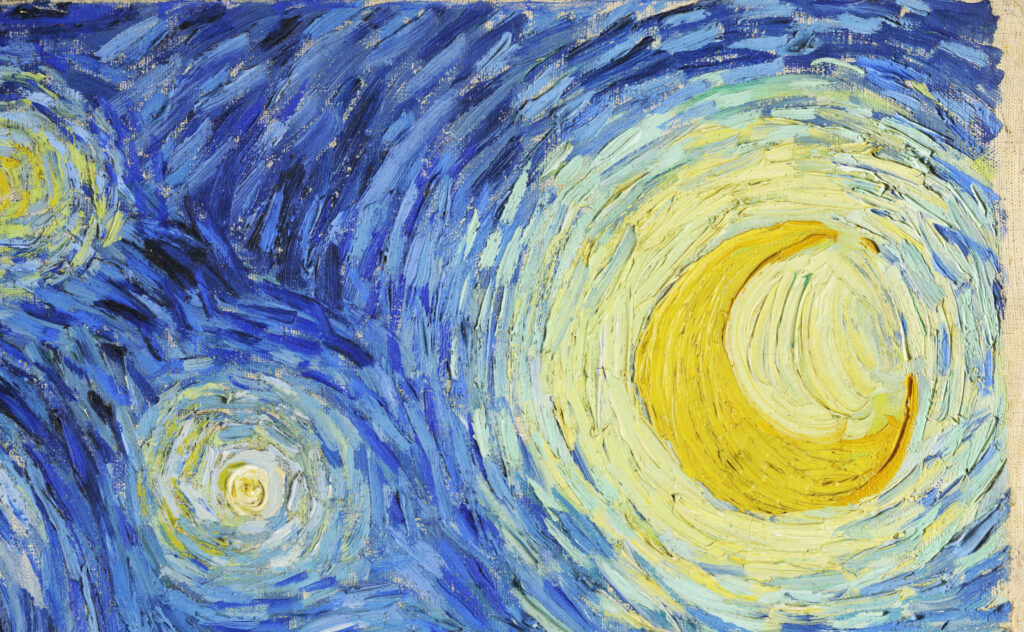
The thickly applied paint is a technique the van Gogh often used. If you have ever seen his sunflowers in real life you will have see just how thickly he applied paint. Sometimes straight from the tube on to the canvas and sometimes with palette knife, the paint was applied like butter on to bread. This technique of building up the paint is called “impasto”. The build up of paint is so thick that it appears to be coming out of the painting. In the two images below, which are close ups of Venus within the painting show this in greater detail.
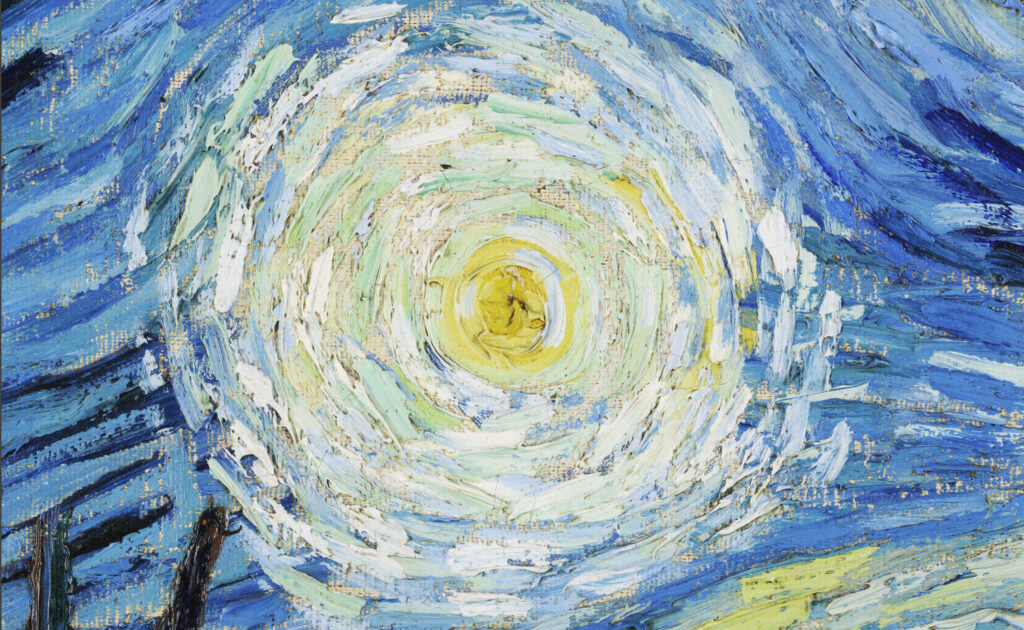
You can clearly see that van Gogh is not even covering all of the canvas with paint, this gives the impasto even more impact and the color matching is seamless – from a distance it does not even look like any of the canvas is showing. It’s hard to say if this was intentional or not but we know that van Gogh was a very quick worker. Whether it was haste or intent it has been put to great effect
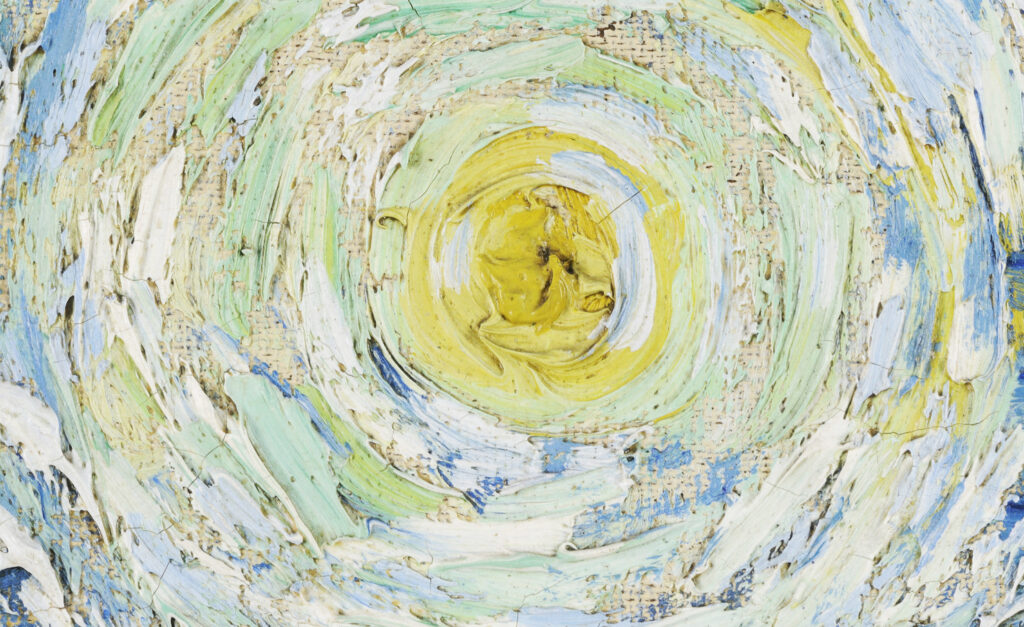
Another example of the impasto technique can be seen in the thickly applied paint in the village. Because the paint is so thick, it creates highlights and shadows on itself. Even in a flat photograph, you can see the depth of the painting jumping out of the page. I have painted in oil many times and it leaves me wondering how long van Gogh’s paintings ever took to dry – in my research the common answer is that it could have taken up to 18 months to dry. This means that it may not have been fully dry even after his suicide months later.
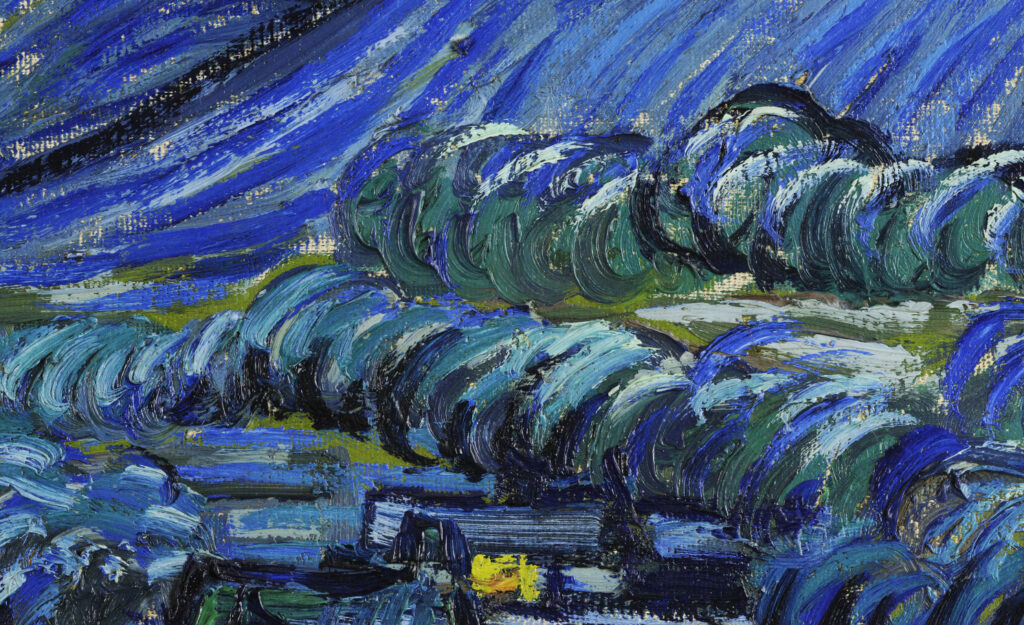
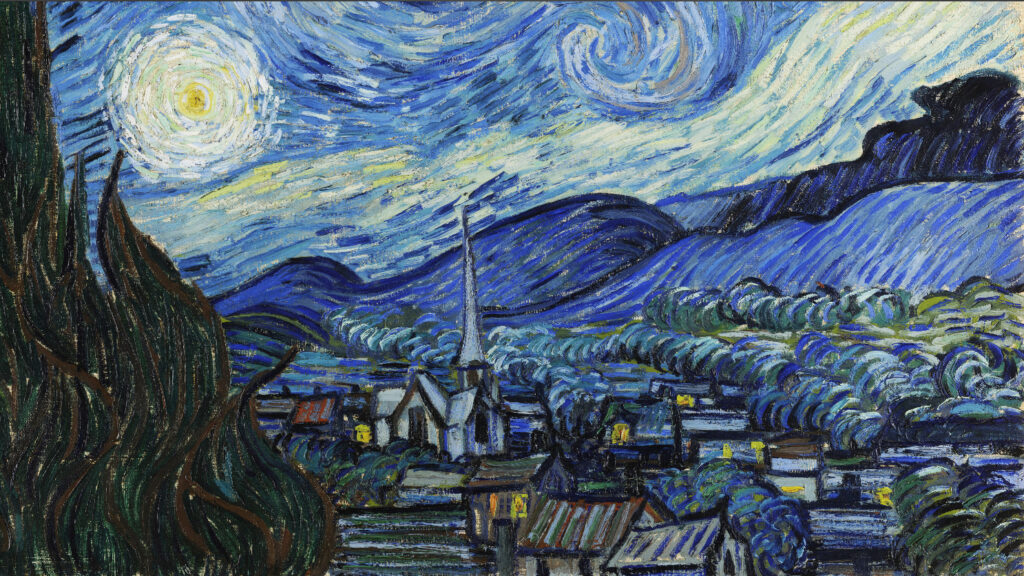
On a walk around the grounds of the asylum, van Gogh would have been able to see the nearby village. It was not visible from his room at the facility but we now know that he composed this image from references. The village is painted in classic van Gogh style, short brush strokes with not too much detail. The color harmonies used in the village are extremely effective. The gas lights emanating from the homes can be seen – this is a nice touch and again the mind starts to wonder. Did van Gogh see this and have any feelings about the family life that was taking place in the village below while he was alone in an asylum. Only a thought and we will never know but given the artist and his tragic end, does this painting show you more than just a Starry Night.
What did van Gogh think of Starry Night
Vincent van Gogh may have thought that his Starry night was a failure. In a letter to Emile Bernard on 20 November 1889, he wrote: “An yet, once again I allowed myself to be led astray into reaching for stars that are too big. Another failure, and I have had my fill of that“. There was also mention of the painting in a letter to his brother Theo dated 18 June 1889: “At last I have a landscape with olive trees and also a new study of a starry sky. Though I have not seen either Gauguin’s or Bernard’s last canvases, I am pretty well convinced that these two studies I’ve spoken of are parallel in feeling.” There is no emotion from van Gogh in his description of his painting to his brother, nothing to suggest that he was excited or proud of what would become the most famous painting of his career. He certainly was not talking to his brother with th same enthusiasm which he had earlier portrayed to his sister
Theo himself was also a little critical of the painting. His comments regarding The Starry Night suggested that the search for style often impacts the true sentiment of a thing “I clearly sense what preoccupies you in the new canvases like the village in the moonlight… but I feel that the search for style takes away the real sentiment of things” (Theo van Gogh, October 1889)
Summary
So much has been said about this painting over the years and the impact it has had on western art. The very best artwork is not only interesting to look at but it also stirs up emotion in the viewer. The Starry night does exactly that. From the vibrant colors used by van Gogh and the thickly applied, short brush strokes, it feels like this painting is alive. The more I look at it, the more I think that the swirling skies are about to start moving, it is charged with that much raw energy.
The painting itself is a masterpiece but when you understand a little bit more about the artist, the circumstances in which he completed the piece, it only adds to the mystery and intrigue. As we look at this night sky are we really looking in to the complicated mind of the genius that was Vincent van Gogh and how he really saw The Starry Night.